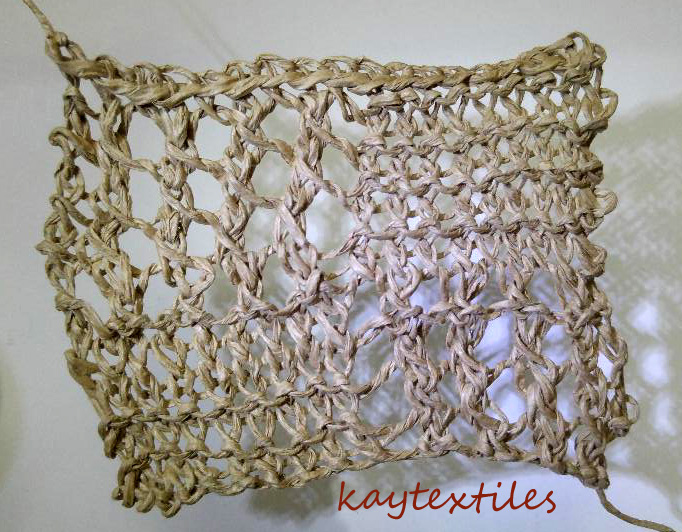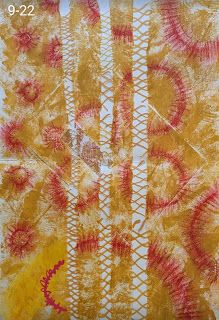Costing Materials
If Lockdown has a bonus, it's not being able to go out and spend, so everything bought was bought specifically for this module.
£
Art /printing materials
Golden silver and pearl iridescent paints 12.40
Daler Interference Medium 6.57
Payne's Grey acrylic paint* 14.41
Pritt 3.00
Madeira Marker 3.38
Procion neutral grey dye 6.59
Other* 20.00
sub-total 66.35
Paper and sketchbooks
Other* 20.00
sub-total 20.00
Material and threads
Jute 2.88
Twine 6.89
Hairpin Lace Kit 4.99
Waxed thread 7.99
A1 Cutting Mat 15.99
Sashiko Needles 5.39
Other* 25.00
sub-total 69.13
Total 155.48
*estimate from stash
Recording Time
Based on elapsed time of two weeks to complete a chapter, working for 2x8 hour days per week.
10 chapters approximately 320 hours.
Health and Safety
Any particular health and safety details have been noted as I performed the tasks during the module.
Additionally,
- keep wires from electrical items away from main thoroughfares
- take a break and move around at least once an hour
- keep 'sharps', e.g. scissors, awls, bradawls, etc stored in a cork
- wear rubber gloves when using bleach and keep room well ventilated
- dispose of sharps considerately
- don't inhale metallic powder or other powders. Wear a mask if prone to irritation.
- take care when heating metal. Check that it has no plastic coating if recycling items, e.g. tomato paste tubes. Hold the metal with pliers, heat it outside for ventilation and have a metal tray handy on which to place it.
- always store art materials clearly marked and away from the kitchen/children/pets.
- using wax and wax pot - keep pot on work surface with flex out of way so don't pull pot over. Cover floor before you start, but should any wax get on floor clean off with scraper (credit card) and abrasive cleaner so don't slip. Cover ironing board with newspaper/kitchen roll and silicon paper - then another layer of silicon paper on top before ironing.
Storage of Work, Materials, Tools and Equipment
Design Work in Progress - kept flat in marked, homemade wall paper lining folder and easily accessible
Completed embroidery - boxed, wrapped in acid free tissue or framed
Completed design work - kept flat, in folders, in cardboard boxes
Papers for design work - kept flat and covered to keep clean
Inks - lids secure in rainbow storage tower, attic
Paints for design work - lids secure in plastic crates
Other items like glue, bleach, sprays - lids secure, labelled clearly, away from children and pets
Embroidery work in progress - covered, usually in pillow case, easily accessible
Fabrics - in under-the-bed crates in attic, fabrics in use in reusable supermarket bags
Threads - stranded - wound onto bobbins, by colour, in plastic containers
- sewing machine - in plastic shoe boxes, by colour
- interesting textured - in plastic shoe boxes, by colour
- machine embroidery - in large plastic box
Beads - small plastic containers in shoe box
Metal threads - acid free tissue in plastic toolbox
Dyes - lids secure, plastic container
Sewing machines, embellisher - upright, covered, normal room temperature
Special materials, e.g. abaca tissue, lutradur - rainbow storage tower, attic
Printing materials - under-the-bed crate, attic (when not in use)
Lino cutting tools - plastic crate, attic
Other electrical equipment - rainbow storage tower, flex lightly wound, stored when cold.
Wire - drawer - masking tape over any sharp ends and kept together with masking tape or cable ties
Wax pot and wax - original box with brush, then in crate with other associated materials
Gold thread - wound round velvet tube and wrapped in acid free paper (to stop corrosion)
Raffia and paper thread - on cone if possible with heavy weight tied to end to stop unravelling and then in large clothes storage bag or plasic crate
Print blocks - made or bought - dry well after use and keep flat in box with design work
Foils - flat in rainbow storage, attic
Cutting boards - upright and flat so don't warp.
Authentication of work
See email.

























































































